Stated Weight: 422 g (155 mm arms w/ spindle)
MSRP: $695.00 / £550.00 / €690.00
Lengths Available: 155, 165, and 170 mm
Chainring Mount Standard: Hope
Spindle Diameter: 30 mm
Stated Weight: 131 g (40 mm length, 31.8 mm clamp)
MSRP: $135.00 / £105.00 / €135.00
Lengths Available:
- 32, 40, and 50 mm (31.8 mm clamp)
- 35, 40, and 50 mm (35 mm clamp)
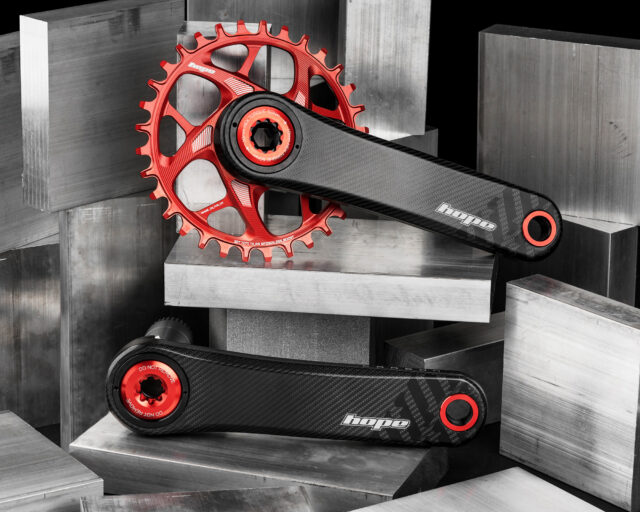
Intro
Hope is arguably best known for making beautifully machined aluminum parts, but they’ve been dabbling in carbon fiber for quite some time now, too, and today they’re launching their first-ever carbon fiber crank. And in case that isn’t enough, they’ve got a new bottom bracket that promises better durability for 30 mm spindles in 41 mm press fit frames, a new Trail bike stem, and now offer their whole product line in a new bronze color, too.
Carbon Cranks
Hope has been making aluminum cranks for quite a while now, but this is their first foray into a carbon fiber one. The Carbon Crank is meant for Trail and All Mountain usage (more gravity-oriented folks on bigger bikes should stick with the aluminum Evo cranks), and as per usual for Hope, it’s made in their own facility in Barnoldswick, UK. The Carbon Crank is offered in 155, 165, and 170 mm arm lengths, with spindles for 73 mm threaded bottom bracket shells and their press fit equivalents, with options for either 52 mm Boost or 55 mm SuperBoost / T-Type chainlines.
There are some interesting things going on with the design and manufacturing of the Carbon Cranks, beyond just their UK provenance. The pedal and spindle interfaces are at the top of the list. Carbon fiber cranks generally use an aluminum insert at each end of the arm to handle those duties, and the bonding between those inserts and the carbon fiber arms themselves has long been a thorn in the side of carbon fiber crank manufacturers, and riders who’ve grown tired of breaking them.
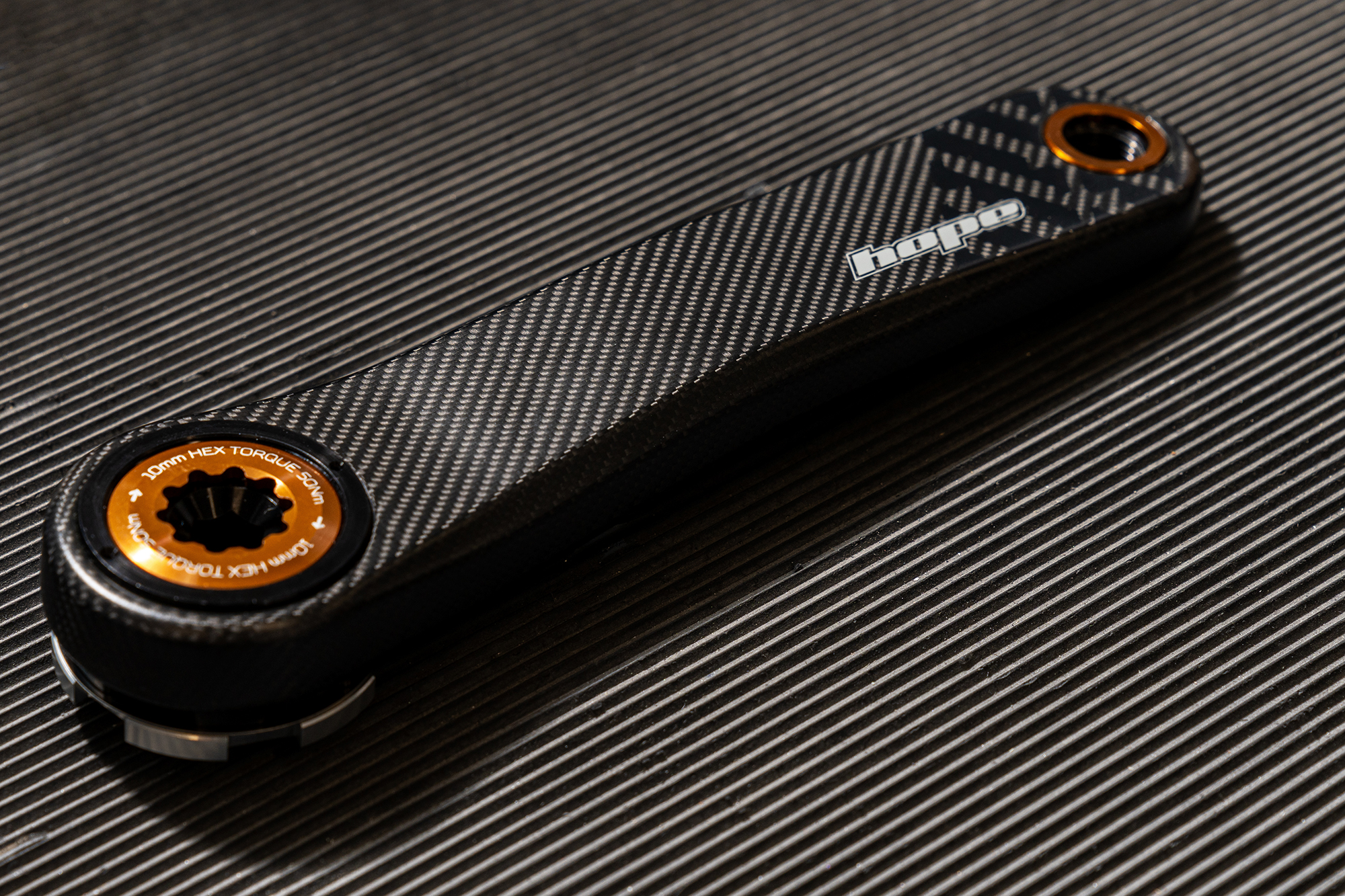
Hope hasn’t done away with the inserts entirely but has made them two-piece threaded affairs that are installed after the carbon arms have been cured, with the two insert halves clamping around the carbon fiber arm to secure the whole assembly. (The pedal inserts are replaceable, should you damage the pedal threads, but the spindle ones appear to be glued into the arms during assembly for additional security.) It’s an approach that I haven’t seen tried elsewhere, and it’ll be interesting to see if Hope has hit upon a truly robust solution to a frequent weakness of carbon cranks in general.
Hope uses a foam core in the middle of the arms, which they say helps damp vibrations, and they’re describing the stiffness of the cranks as being tuned for a nice ride feel, rather than making big claims about the Carbon Cranks being ultra-stiff. They’ve got a 168 mm Q-factor with the standard Boost spindle (just one millimeter wider than the pretty-narrow Evo aluminum cranks); that grows to 176 mm with the wider 55 mm chainline spindle.
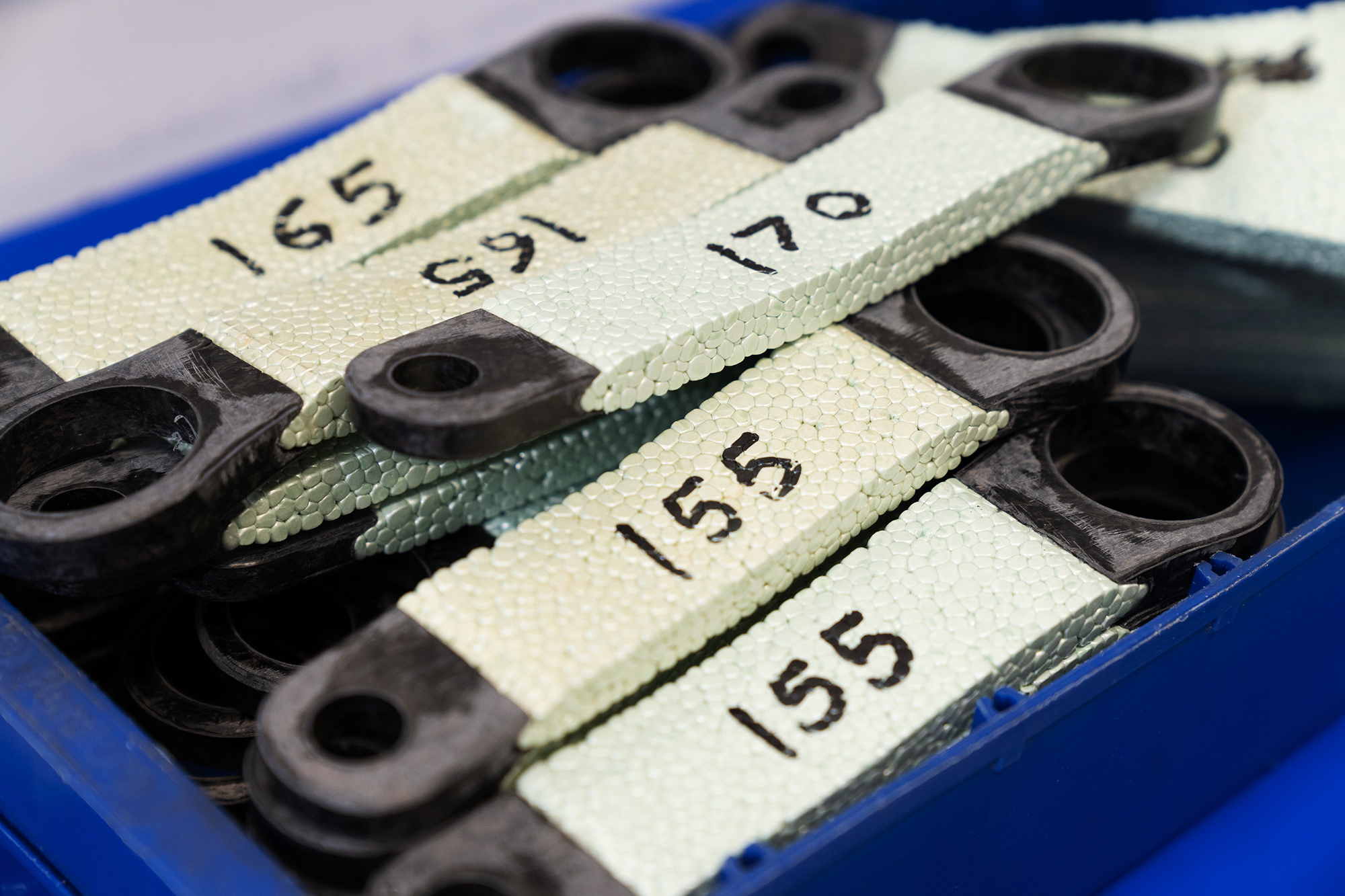
Unsurprisingly, the Carbon Cranks use the same splined, self-extracting spindle interface and direct mount chainring standard as Hope’s existing Evo cranks. The spindle is 30 mm in diameter, and while the splines are shaped differently, the overall arrangement is quite similar to Race Face’s Cinch setup and SRAM’s Dub one, with a threaded preload collar on the non-drive side. We’ve had good luck with the desigh on a few different sets of Evo cranks over the years, and while it might be nice to see a more widely used standard for the chainring mount in particular, Hope has a wide range of rings available (and their new-ish R22 ring does a slick job of working with most chain standards, including Shimano Hyperglide+ and SRAM T-Type ones).
PF41 30 mm Bottom Bracket
Along with the new cranks, Hope has overhauled their bottom bracket for 41 mm diameter press fit applications (e.g., BB92, and others). Those standards were mostly intended for 24 mm spindle cranks, leaving little room for bearings with a 30 mm spindle, but Hope has come up with a custom-designed, Swiss-made stainless steel bearing that leaves room for an internal spacer tube and external secondary sealing to keep the bearings spinning longer.
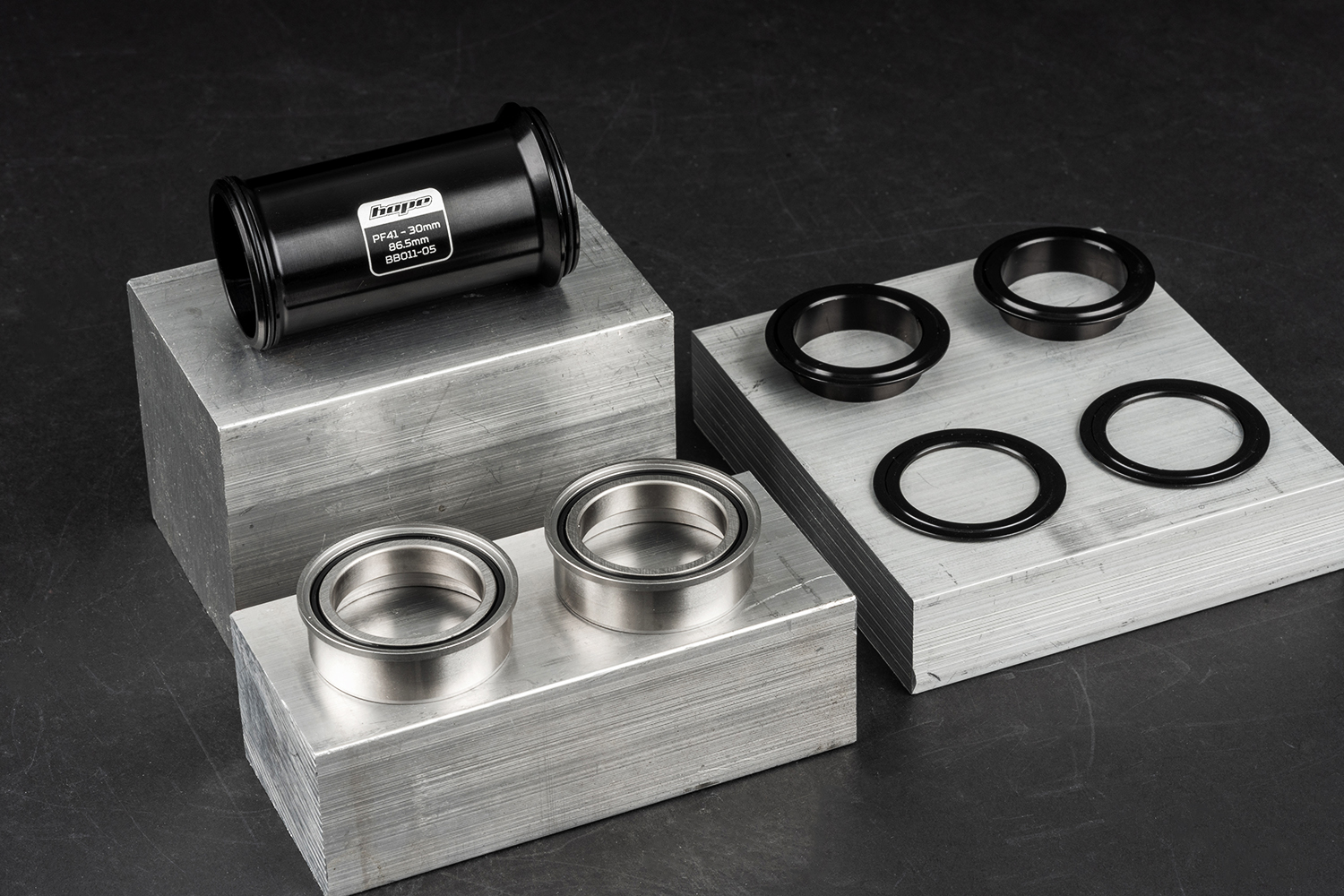
TR Stem
Hope is also launching a new TR Stem, replacing the longstanding AM Stem for Trail / All-Mountain use. It’s claimed to be both lighter and stiffer than the outgoing model and is machined from 2024 aluminum. The TR Stem uses a two-piece faceplate with a no-gap clamping system and stainless steel hardware and is offered in 32, 40, and 50 mm lengths with a 31.8 mm clamp, or 35, 40, and 50 mm lengths to suit a 35 mm handlebar. All have zero rise and a 56 mm wide bar clamp area, and the 40 mm long 31.8 mm clamp version is claimed to weigh a quite light 131 grams.
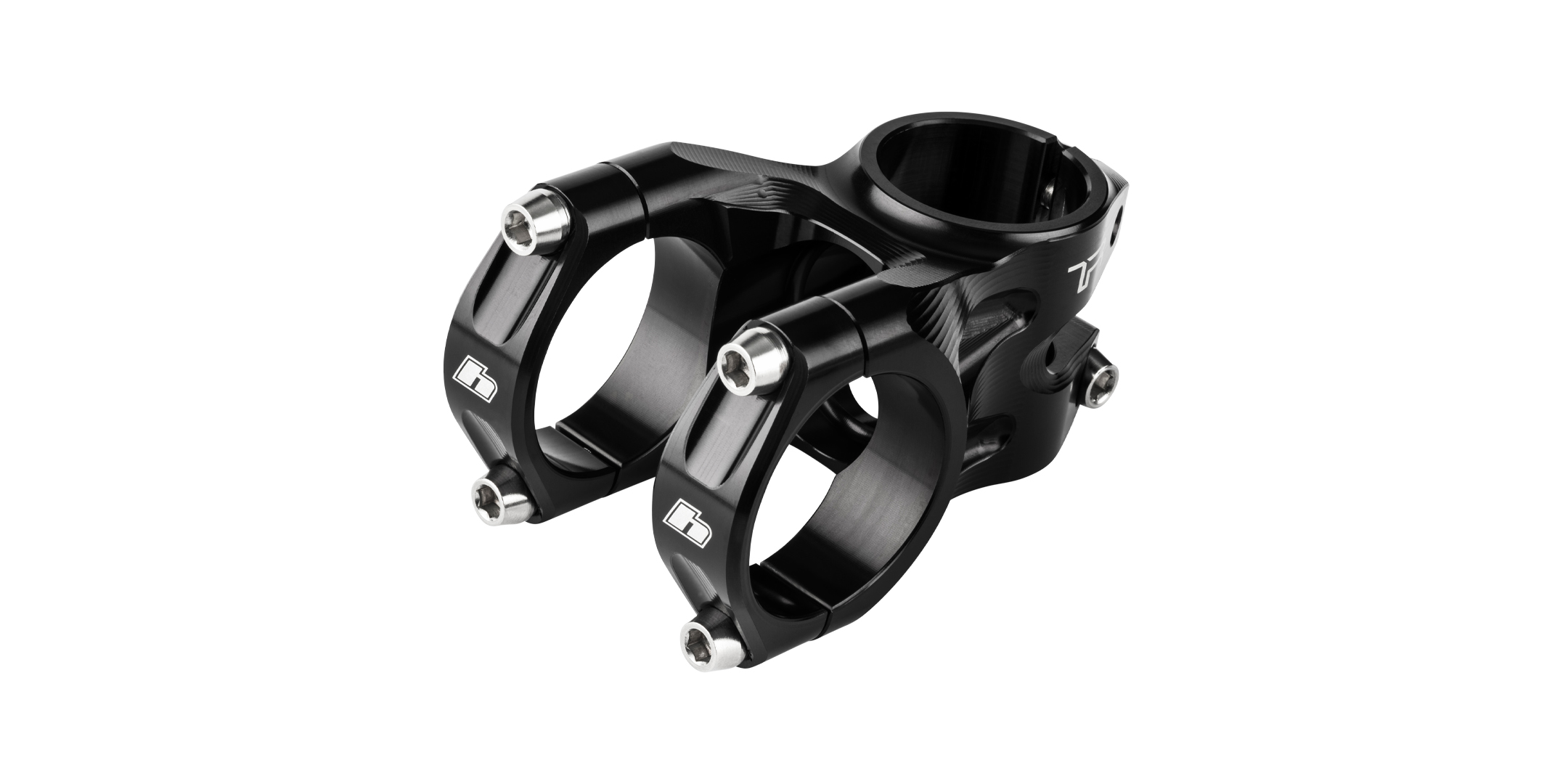
Bronze Everything
Finally, Hope is also adding a new bronze option to their standard list of colors across their lineup. Everything that Hope offers in anodized colors (which is to say, the majority of the stuff they offer) now comes in bronze, in addition to the existing black, silver, red, blue, orange, and purple options.
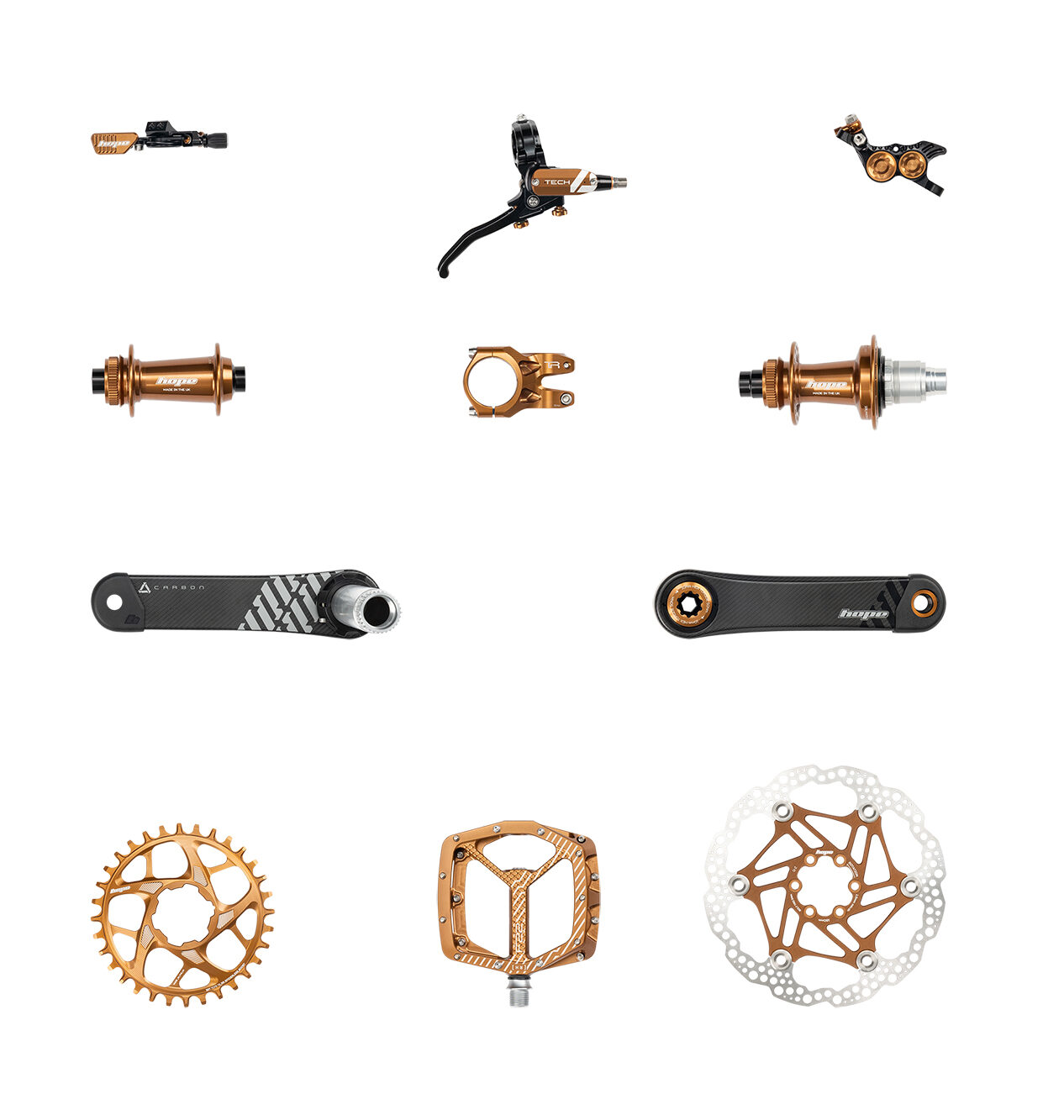
Bottom Line (For Now)
Hope’s new Carbon Cranks have some interesting design details and are notably light, the new TR Stem is similarly svelte, and the bronze color option for most of the parts they offer looks great. We’ll be testing the new Carbon Crank and TR Stem starting very soon, so stay tuned for a full review to come.
